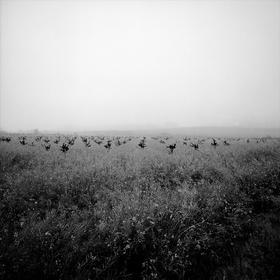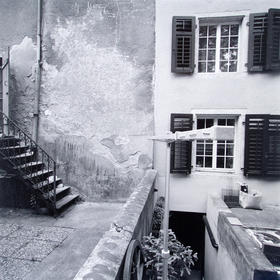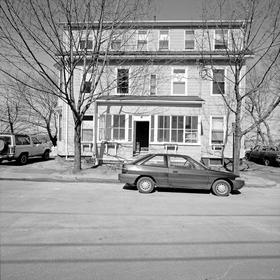Benson Grist Mill
On the site: a new series from near Salt Lake City, Utah in September: here.
The Benson Grist Mill is a small tourist attraction of a restored grist mill north of the city. The mill building itself is large, three stories high and was powered by a stream. It dates back to 1842. The project ends up being in black and white as I felt that color would not add to the pictures. Working on these photographs over the past two weeks felt very much like I was working within my own tradition of making series work: black and white, wide angle lens, hand held camera and walking through a place or an area to make a sequential body of photographs. This way of working, what I call "series" work, came about a long time ago in the early 80's. I wrote about this discovery in a few posts starting here:
http://www.nealrantoul.com/posts/nantucket-1980%20Part%201.
Over my now long career as an artist, making series work has lived as a core principal for me.
This is a little difficult to communicate effectively but ultimately I am often not so invested in a place that I photograph as what that place means in terms of the pictures I make from it. Another way to say this is to ask the question if I cared about the grist mill's history? What it was used for? The role that it played in the local economy of the time? Not so much. On the other hand, without this content, this subject in front of me that day, what would I have? Nothing. It is this Harry Callahan was referring to when he said that the "subject is everything".
Let's take a look.
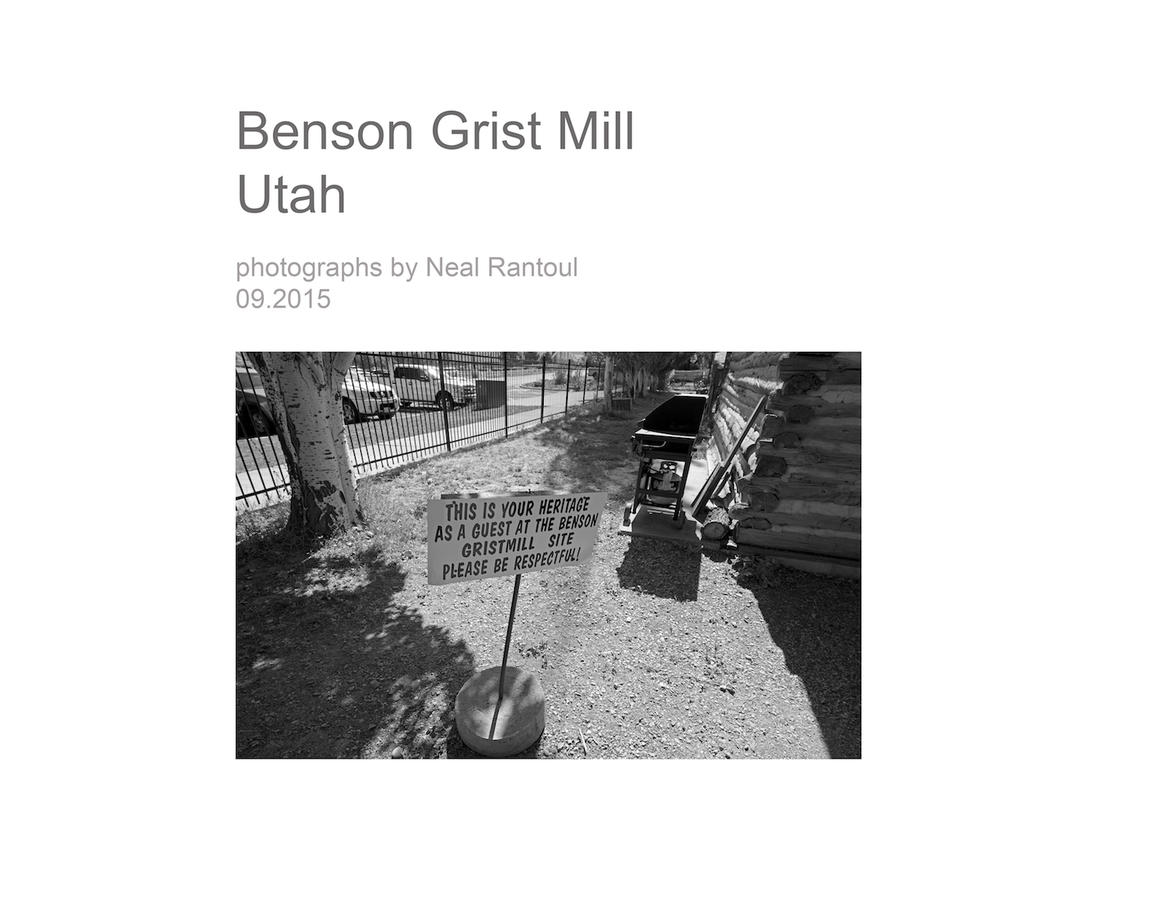
This is the title page. Benson Grist Mill is a sequenced and numbered portfolio of pictures, printed 20 inches across on 22 x 17 inch Canson Photographique Baryta paper, in black and white.
The first picture in the set is this:
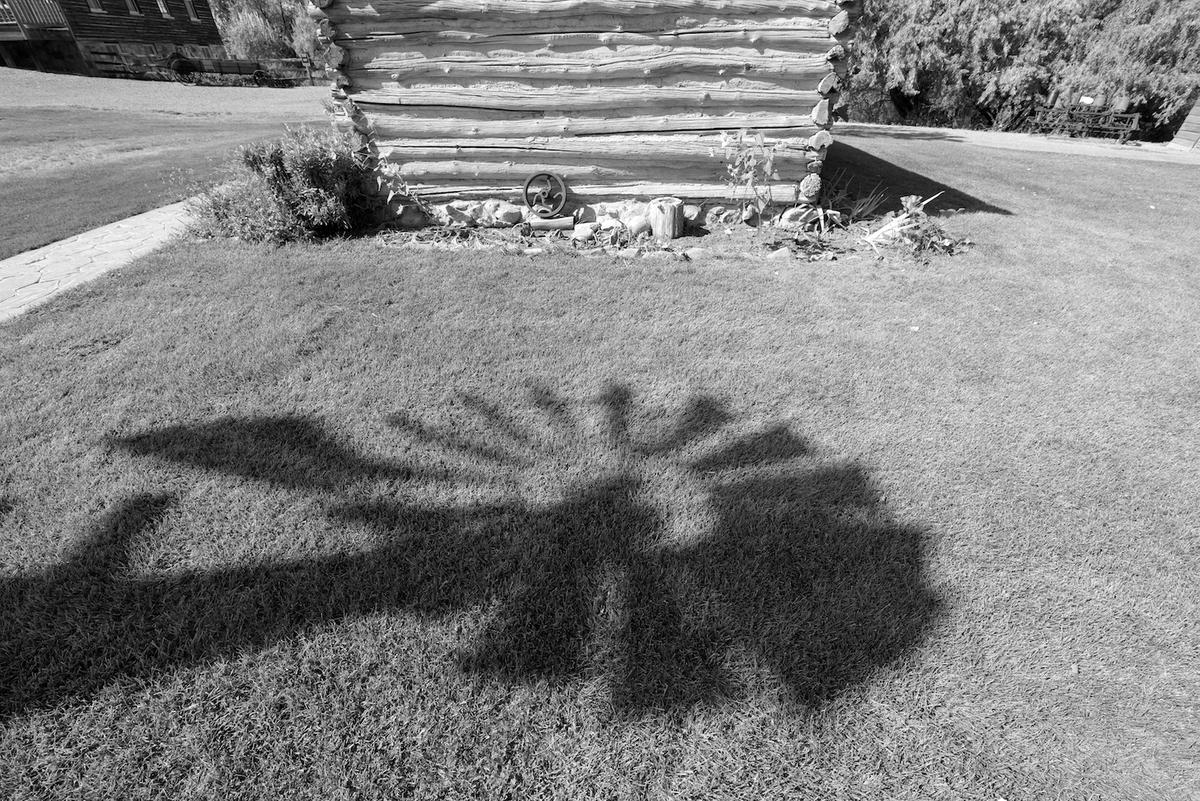
and it establishes that we are in some sort of farm or old village on a very bright and sunny day in the summer or early fall with paved paths, which would reinforce that this is a place for tourists to come see and that is correct. We see the bottom half of a log cabin, a lot of grass, some bushes and a shadow. Of course, in this one the big elephant in the scene is the shadow of a wind mill, which, as it turns out, we never see in reality in the series. This is a prevailing theme throughout this 17 print series. The shadow contained within the picture, without the actual object being shown. This image, were you to see it up close and personal, is sharp and exceptionally clean, the print is open and without color or toning with deep blacks but with detail contained within them, Zone lll shadows, if you know what that means.

As we go through these it might be helpful if you think of the series as photographs in pairs, with some existing as spaces between the pairs. I will point them out as we go along. For this one we have the same building now described mostly in front of us with strong light on the logs looking almost bleached on this bright sunny day. Notice that the top of the building is cut off. I am known for this and it irritates many but I believe in the device, truncating the top peak as it contains the picture better. There is also something of an "arrow" in the shadow pointing us to the left to the grist mill which is coming up, but not quite next as we have this one before we go there.
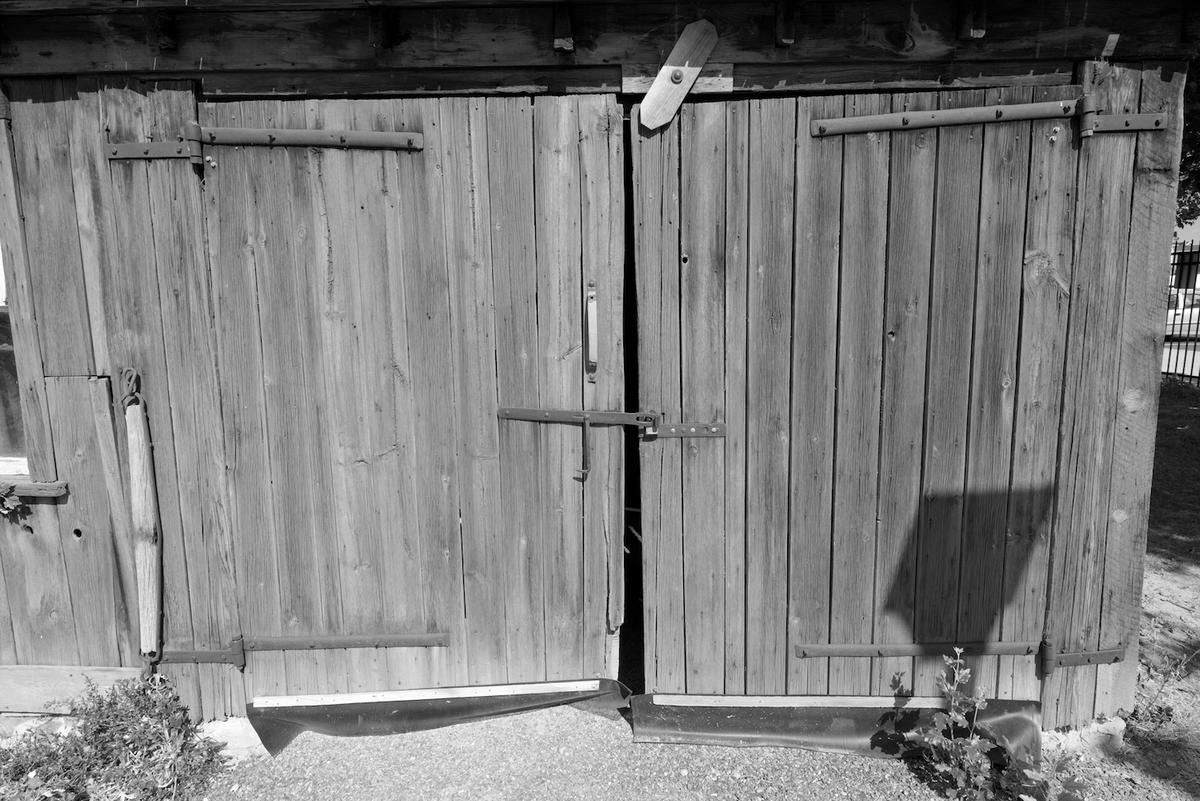
Why? For its surface treatment, and for its sheer textural richness and beauty. Notice the shadow again here, never defined as to what it is coming from.
Let me take us off topic slightly for minute. In this set we have nothing revolutionary at all. I am using commonly available materials, am handling single files one at a time to make single pictures. I am hand holding the camera when shooting and am using a wide angle zoom lens. All of this is everyday practice digital photography. But, I am doing all this with as consummate a skill level of rendering as I know how to make based upon my over 40 years of experience as a photographer. Does it matter? I think it does but you would have to be the judge by seeing the actual prints. I would hold this photograph up as an example. Sliding your eyes over the surface of that door, this very old wood standing the test of almost a couple of centuries is a little like looking at the variety and subtleties of a landscape photographed from the air.
Let's move on, into a sort of trilogy, out of respect for the structure itself, the grist mill that was built originally in 1842, the core of this little assemblage of buildings, shacks and barns, but also because in pictures, at least, it is magnificent.

So here we are at what would seem to be the very center of the series, the pictures of the grist mill itself. But I've gotten there only four pictures into the series. Why is that? Because it is a false center. It really isn't the main point of this series but only serves as a lead in and prelude to some other things I want to say farther down into the series.
So this one, turning things into obliques and angles, gives us a little of the front of the grist mill but denies us much knowledge of the overall structure. This was really a decision made more in editing than the day I was making the pictures. Because I did stand back and photograph the front full facade of the building but didn't include it as it left nothing to the imagination. I would even go as far to say that it didn't have any "artistry". I know that may seem odd but the image (notice I am not showing it to you) was factual and boring. And you and I both do not have time for those.
So, next up:
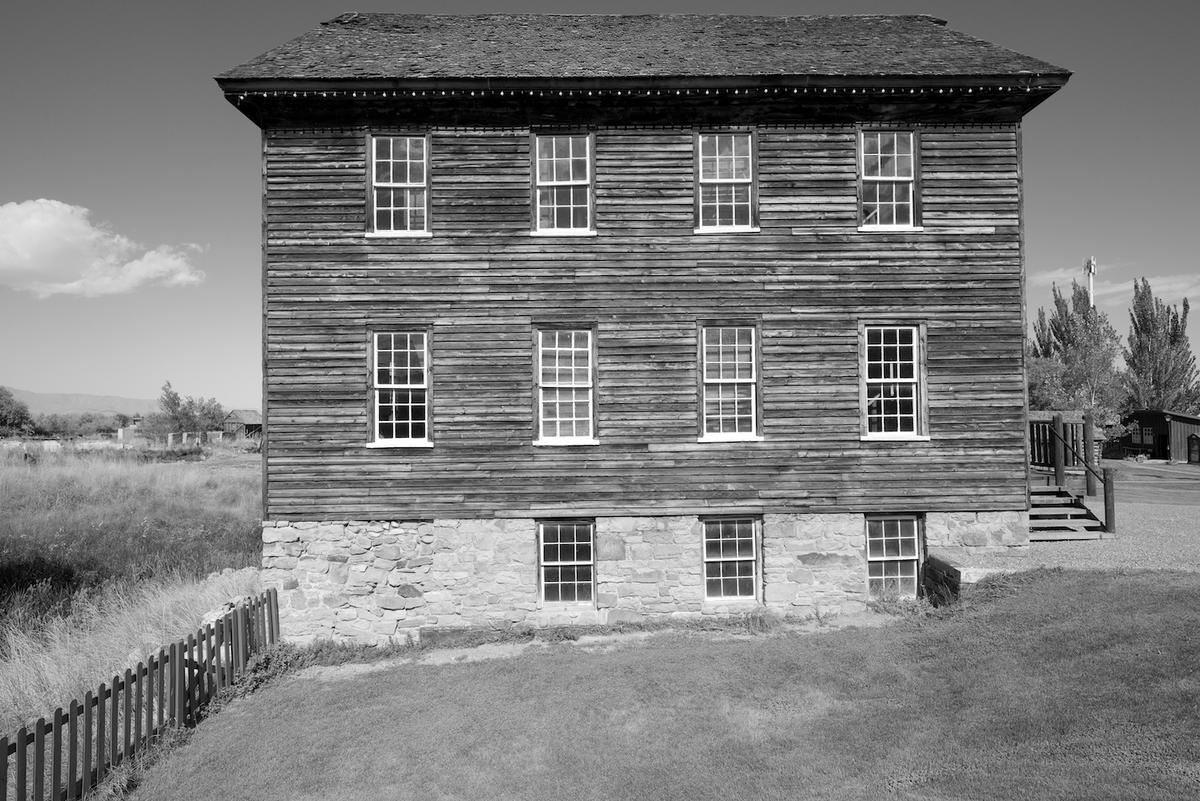
Bang. Straight. No convergence as I am standing on a slight hill to shoot it and with a little sky showing along the top edge. A facade based picture with what looks like the sun almost dead on behind me, a little to the right perhaps. On the right, the same steps we saw in the previous frame, what looks like an antenna or a short cel tower in the background place us now in 2015, not 1842 and then the side of the building serving as the springboard to head us back to the ridge where there seem to be some buildings. We are headed there but not quite yet. And finally keep an eye on the fence as it will reappear here:
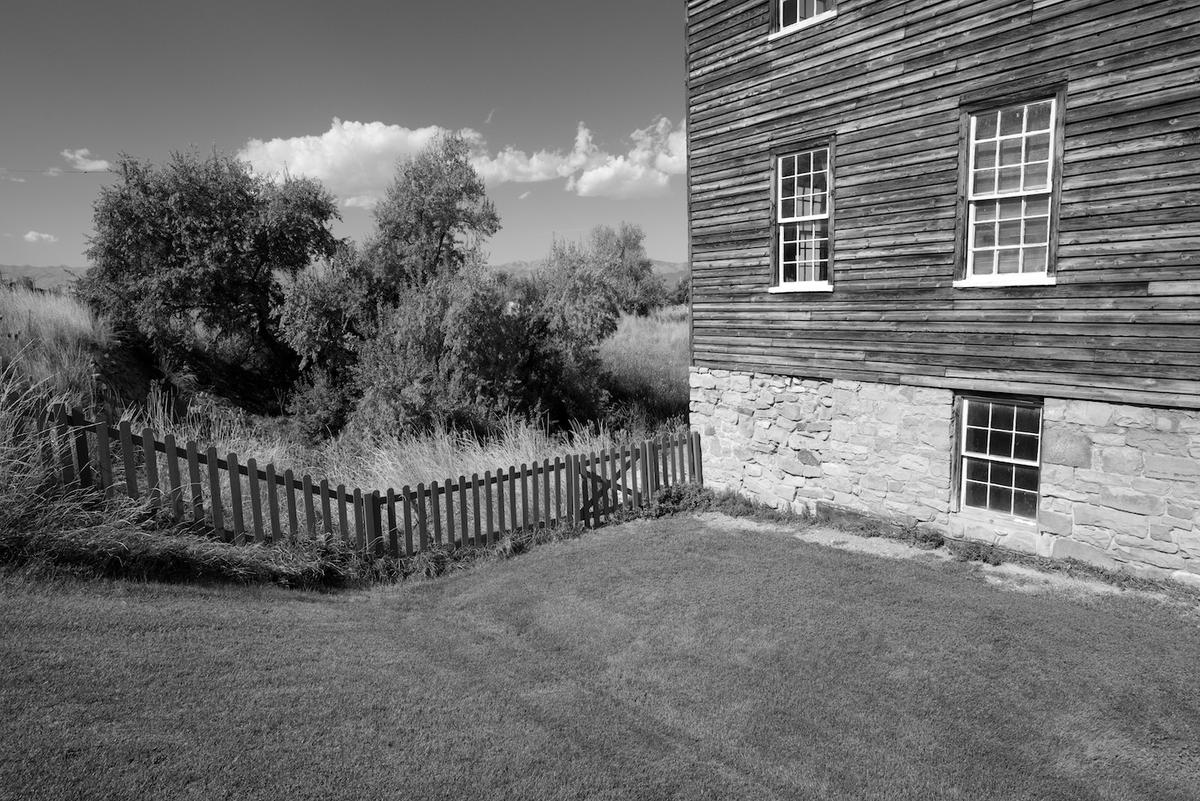
No longer so straight. Here I am letting the width of the lens have its due, rather than playing it conservative. Clearly the lens making things a little different. I remember working to make that center line of the edge of the grist mill be straight and then letting whatever else was in the frame angle out.
Are we having fun yet? I know I am. Let's do one more and then we'll save the rest for part 2.
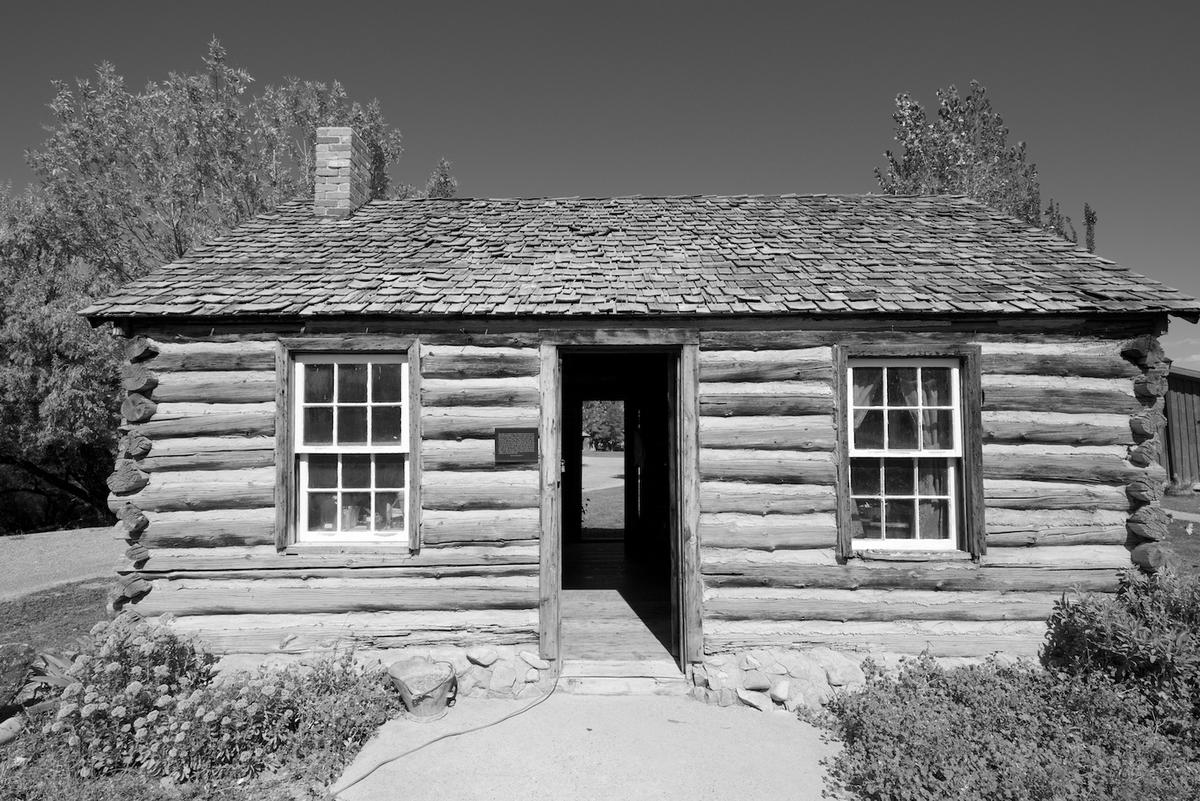
Odd. Yes, this is our original log cabin but placed here as though we've looped back around to it from the grist mill. True enough. That is exactly the way it worked. In order to move farther on and end up on the ridge back behind the mill I needed to walk on the path you see to the left to a small bridge that crossed the stream. In terms of the project this is a little like hinting at something, denying it and then giving it to you. As a very poor pianist, I often play against a chord to increase tension and make the getting to the harmony in the cord itself more rewarding and satisfying. Same here. Note the extension cord coming out from the doorway leading to the black frame around which another picture is being framed, the continuance of the pathway in the far background, the verticality of this small one mimicked by the two windows. Finding a way to make a vertical photograph in a horizontal frame? Always fun.
I would think by now you might be mulling over what I said at the start. About the subject being of secondary importance in relation to the pictures made from it. Another way to analogize about it is this: it might be helpful to think of what is in front of you with your camera as a list of ingredients from which any of us could make a wide variety of dishes for our dinner. As I parked my car and walked into the Benson Grist Mill with no camera, not knowing what it was, and scouted the location for a few minutes, made the decision that this was good and headed back to the car to get my camera I was thinking about logistics, of course (what lens, what ISO, have I got a fresh card, should I bring a backup battery with me?) but also that here I was, once again, about to embark on a series and psyched for the challenge of making pictures that might become a part of my oeuvre. In fact, that's just what has happened.
This is probably a good place to stop this post. I will bring Part 2 in quickly, in a day or so, and hope you will stay along for that one too.
I hope you are enjoying the look at this new work. Let me know by emailing me. Would you like me to continue?
Neal's email: here
If you want to see the Benson Grist Mill series as prints get in touch with 555 Gallery in Boston.
Next up: Benson Grist Mill Part 2
